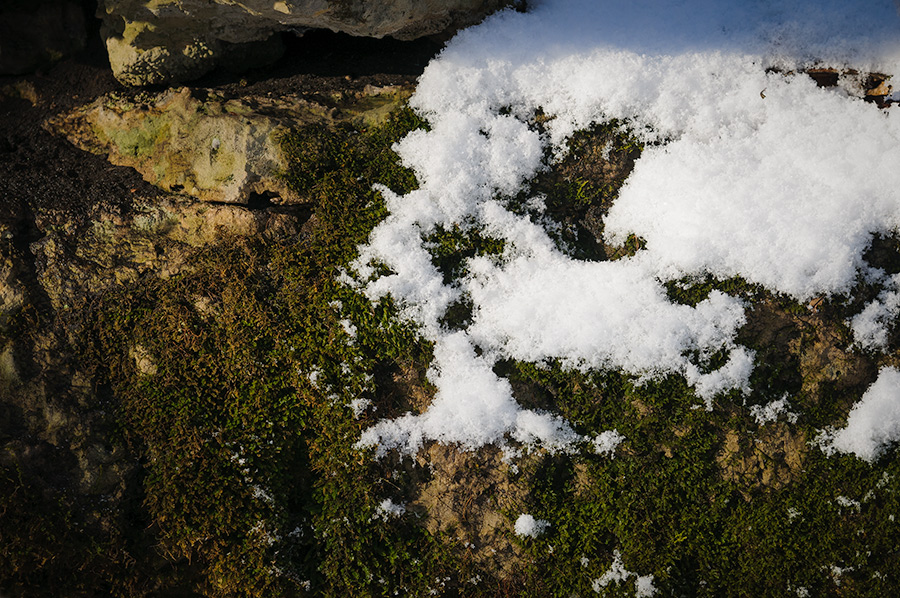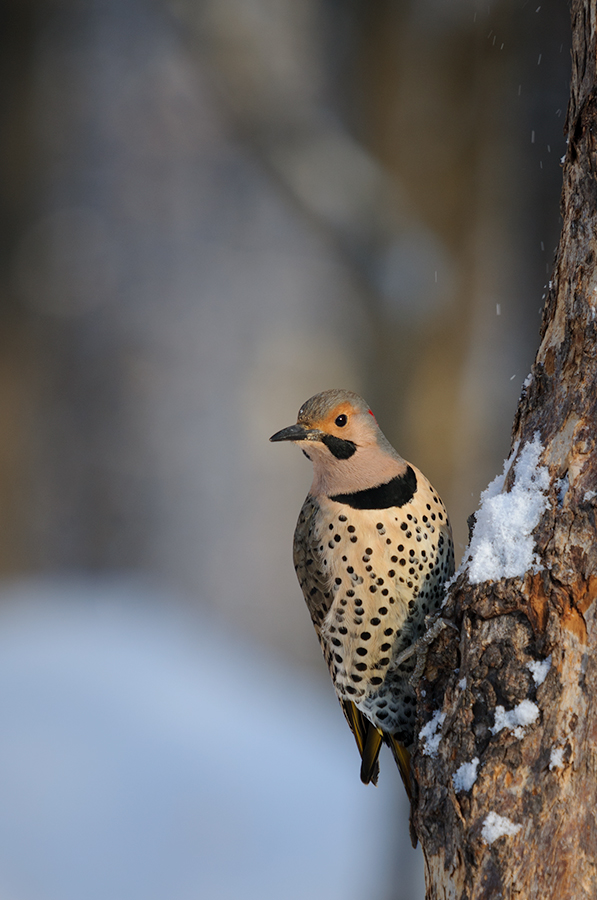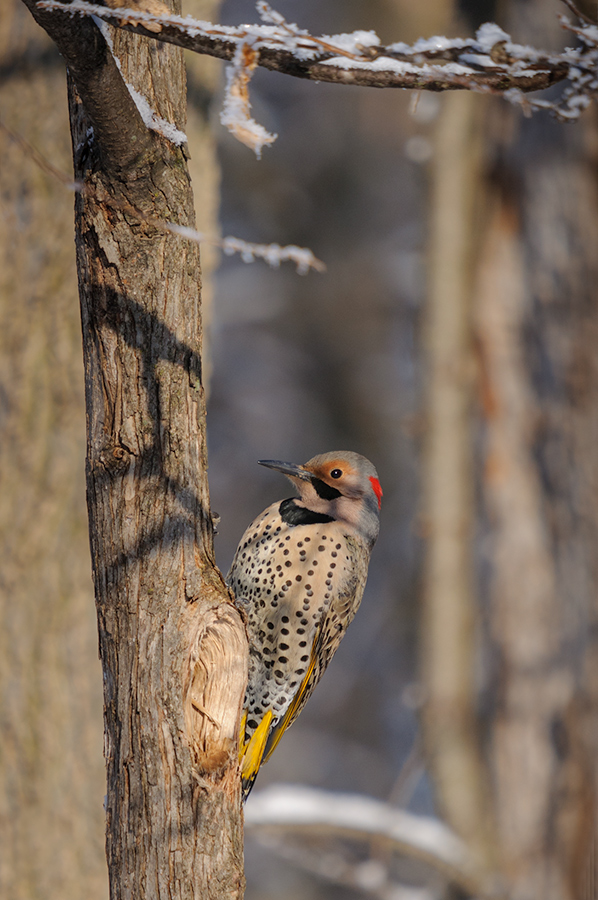
Surprise, surprise (not really), we had some fresh snow on the ground this morning… I got up early to take advantage of the great light, provided by a slightly diffused sun and the snow as a reflector. First I followed some fox tracks in the snow back to the rocks and the valley behind the house. The tracks in the snow told me that the fox had checked the old den from last year and I wonder if we will see another litter of fox pups again. Second, the light made the colors of the moss on the rocks pop and in combination with the snow it was worth a few clicks to me.

Back at the house I set up the tripod with camera and long lens attached on the porch and it took only a minute and the woodpeckers showed up. I counted four Downy, one Hairy ,and three Red-bellied Woodpeckers. However, the star of this early morning was a male Northern Flicker. We have here the eastern form of the flicker, the yellow-shafted, as you can easily identify by the second photo. It is this time of the year when most of the birds get a color boost because of the mating season. I wrote it before, this is the first winter in the last ten years that we have seen the flicker all winter long. Usually they have been here only a few days in very early spring.
It took only a few hours and all the new snow melted away. The old one is getting icy and may take still a while to disappear.

It is my 200th blog post “Nature clicks”. I started this category four years ago and it became the stage for photos and information about critters and other things in nature that got my interest. I think the Northern Flicker with its wonderful colors is a great bird to celebrate this little milestone in my ongoing photography journey. Thank you to all my friends and visitors of this blog for stopping here regularly or occasionally!





